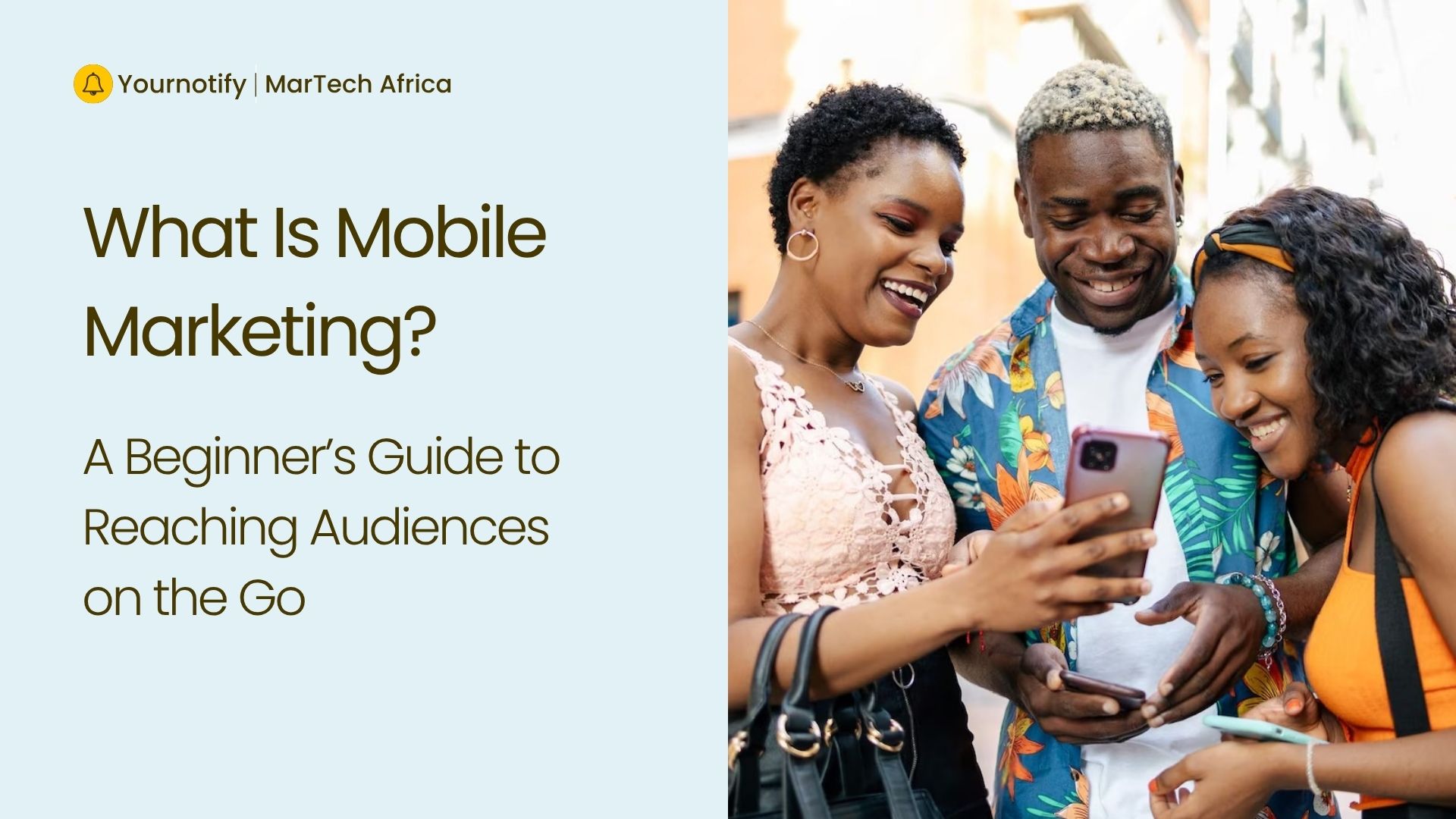Sending your customers the right messages, and at the right time is critical to their…

What Is Mobile Marketing? A Beginner’s Guide to Reaching Audiences on the Go
In a world where smartphones are practically an extension of ourselves, it’s no surprise that mobile marketing has become one of the most powerful tools in a brand’s digital toolkit. But what exactly is mobile marketing, and why does it matter so much today?
Mobile marketing refers to any promotional activity aimed at reaching users on their mobile devices, typically smartphones and tablets via SMS, mobile apps, mobile-optimized websites, push notifications, social media, email, and mobile advertising. It’s about reaching the right person, at the right time, in the right place, often literally in the palm of their hand.
With mobile device usage surging globally, businesses that fail to prioritize mobile are missing a major engagement opportunity. According to the DataReportal 2024 Global Digital Overview, the average user now spends about 4 hours and 35 minutes per day on their mobile phone. That’s a significant amount of time where brands can make meaningful connections through well-crafted, personalized mobile campaigns.
Asides from being a communication channel, it is also a major driver of revenue. As per Zenith’s 2023 Advertising Expenditure Forecast, mobile ad spending is projected to exceed USD 380 billion in 2025, accounting for over 60% of total digital ad spend. This explosive growth highlights the increasing importance of mobile-first strategies across industries.
Key Mobile Marketing Channels
Here are some of the most effective ways marketers are reaching users on mobile today:
- SMS & MMS Marketing: Fast, direct, and often high-converting.
- Push Notifications: Quick alerts through apps to boost engagement or drive action.
- In-App Advertising: Targeted ads within popular apps and games.
- Mobile Search & Display Ads: Optimized for on-the-go browsing behavior.
- Mobile Email: Designed for responsiveness and ease of reading on small screens.
- Location-Based Marketing: Delivering relevant offers based on real-time user location.
Benefits of Mobile Marketing
1. Immediacy: Reach Your Audience in Real-Time
Mobile marketing enables instant communication, allowing brands to send time-sensitive messages like flash sales, limited-time offers, or appointment reminders—directly to users’ devices. With push notifications or SMS, brands can engage users at the exact moment action is needed, improving responsiveness and conversion rates. This real-time interaction creates a sense of urgency that desktop or traditional channels often lack.
2. Personalization
One of mobile marketing’s strongest advantages is its ability to deliver deeply personalized content. By leveraging user data such as browsing history, app behavior, location, and purchase patterns, marketers can create hyper-relevant messages that resonate. For example, a retail app can send a discount code for sneakers to a user who recently browsed athletic shoes, making the message feel intuitive rather than intrusive.
3. High Engagement Rates
Mobile marketing channels especially SMS, mobile push, and app notifications tend to outperform email and desktop in terms of open, click-through, and conversion rates. For instance:
- SMS open rates can reach over 90% within minutes.
- Push notifications boast higher engagement when well-timed and personalized.
- In-app ads deliver contextual relevance during active user sessions.
With people spending hours daily on their phones, mobile creates a prime opportunity to capture attention and drive interaction more effectively than traditional digital formats.
4. Cost-Effectiveness
Compared to large-scale advertising like TV or desktop display ads, many mobile channels offer affordable entry points with strong returns. Tools like:
- Bulk SMS platforms allow direct communication at a low cost.
- WhatsApp Business facilitates personalized customer service and promotions.
- Mobile retargeting helps re-engage users who’ve shown interest, improving ad efficiency.
This makes mobile marketing a highly attractive option for startups, small businesses, and emerging markets with limited budgets.
5. Rich Data & Actionable Insights
Every interaction on mobile taps, swipes, scrolls, installs, session duration provides real-time behavioral data. Marketers can track:
- How users navigate their apps
- What messages lead to purchases
- Which locations yield the highest engagement
This granular level of insight allows for continuous campaign optimization, audience segmentation, and predictive analytics. The result? Smarter decisions, better performance, and higher ROI.
By meeting customers where they are (and when they’re most active), your brand can deliver more value, build stronger relationships, and drive better results in a mobile-driven world.
Related Content
